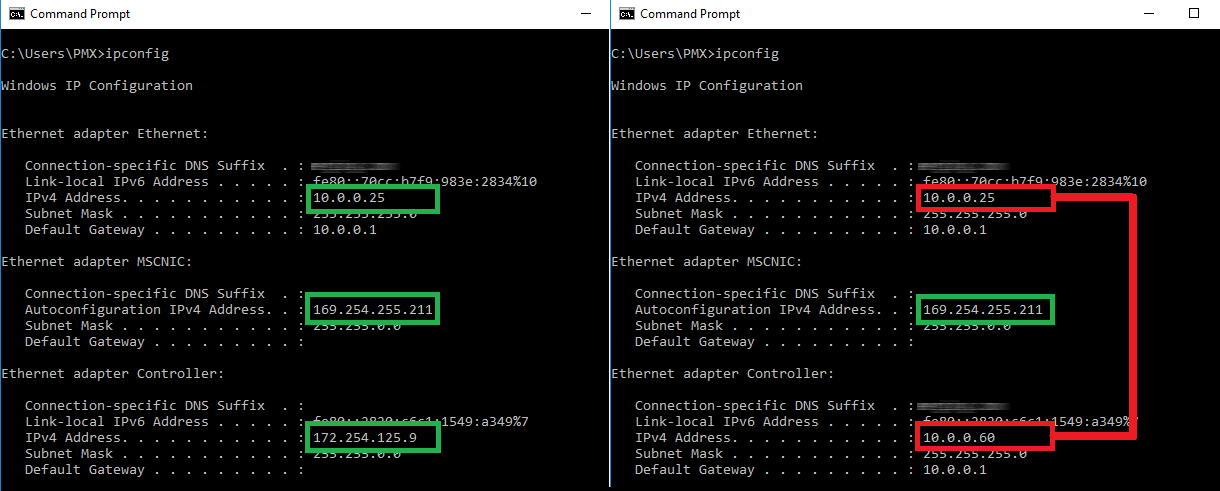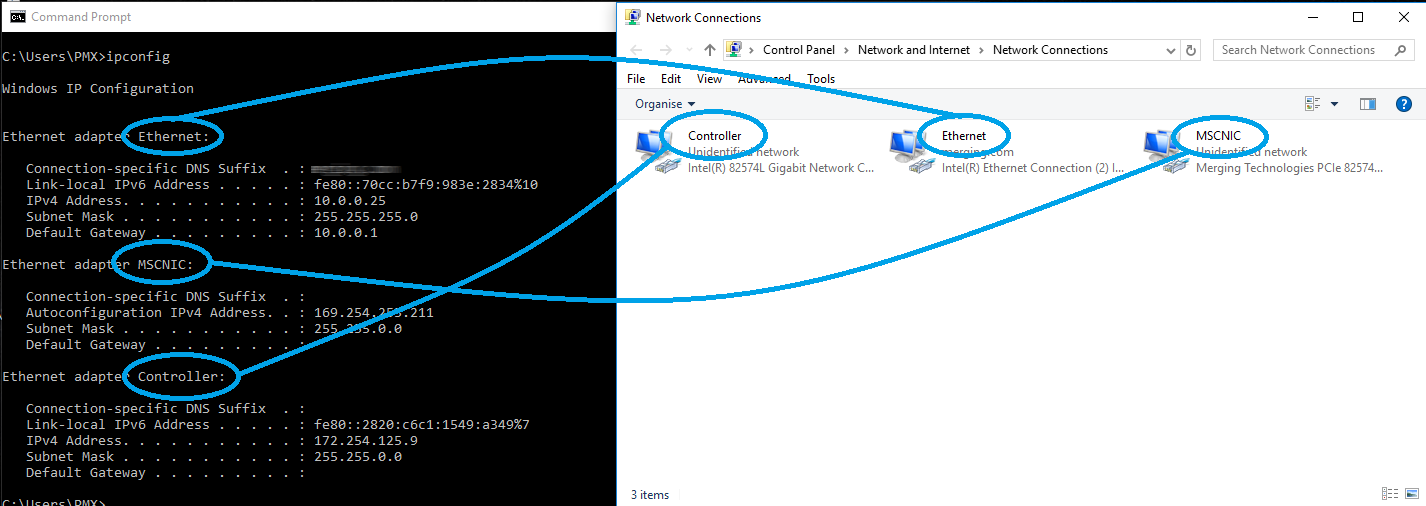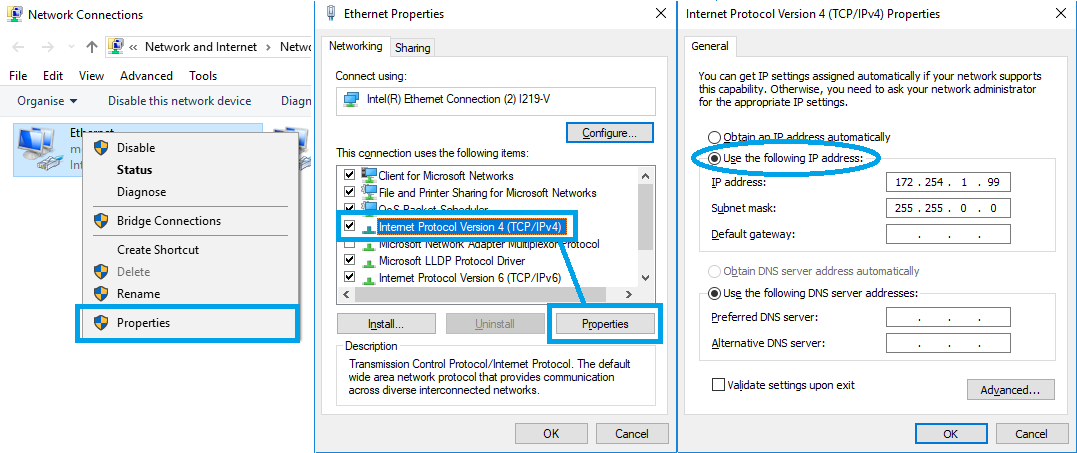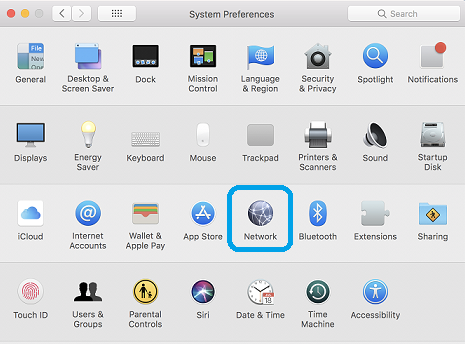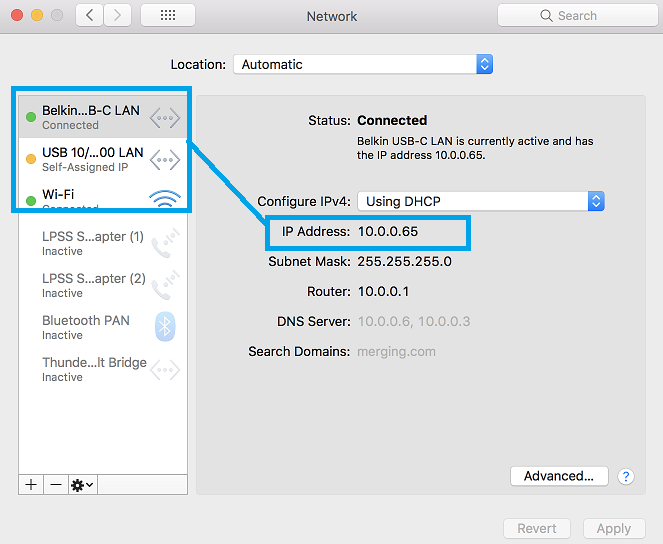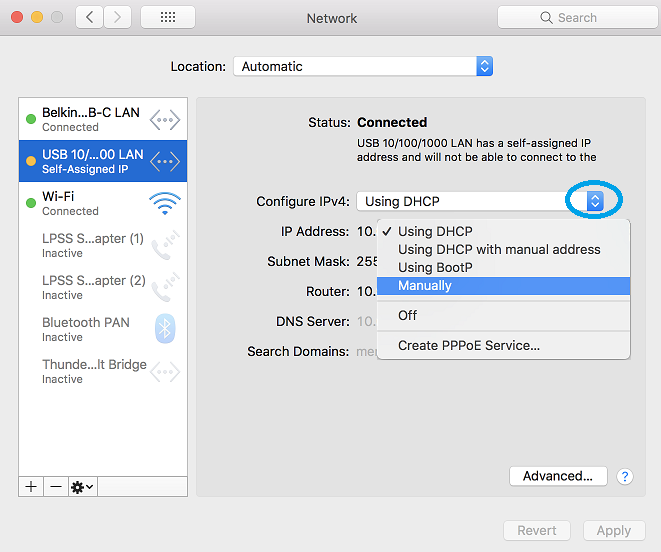IP adresses conflict.
When you have several networks connected to your computer, the operating system uses the IP addresses to sort the network datas and send it to the correct network.
If two networks are connected to one computer, the root of the IP addresses have to be different, otherwise the computer will not be able to determine where to send the network datas.
Imagine a town that would have 2 streets with the same name !
Private IPs should only be in the ranges specified here : https://en.wikipedia.org/wiki/Private_network
Windows
Getting the IP addresses list
In Windows Search, type "cmd" to open a command prompt.
In the command prompt, type "ipconfig".
This will list all the network adapters and show their network settings.
If you have several IP addresses in the same range (eg. adapter 1 on 10.0.0.12 and adapter 2 on 10.0.0.48), you will need to re-configure it manually.
Tip: To easily identify your network adapters, rename the cards in the Network Connections window.
Configure the IP addresses
Go in Windows Control Panel > Network and Sharing Center, then click on Change Adapter settings (left)
Right click on the adapter that you have to configure and select Properties.
Select the Internet Protocol Version 4 (TCP/IP), then click on the Properties button.
Set it to "Use the following IP addresses", then enter the IP address. It must be in the same range as the network device(s) connected on it, for example : adapter IP is 172.16.0.10 and network device is 172.16.0.20
The Subnet mask is mandatory; Windows can set it automatically, simply click in the Subnet mask field.
You may need to also change the attached network device(s) IP address, consult their documentation for details.
The IP address 127.0.0.0 should NEVER be used.
Once configured, you need to restart the computer for the changes to apply.
MacOS
Getting the IP addresses list
Go in the System Preferences,and select Network.
Browse the adapter list on the left pane to get the IP addresses.
If you have several IP addresses in the same range (eg. adapter 1 on 10.0.0.12 and adapter 2 on 10.0.0.48), you will need to re-configure it manually.
Configure the IP addresses
Select the adapter that needs to be configured, and click on the arrow next to Configure IPv4.
Select Manually in the drop down list, and enter the required IP address.
It must be in the same range as the network device(s) connected on it, for example : adapter IP is 172.16.0.10 and network device is 172.16.0.20.
The Subnet mask is mandatory; MacOS can set it automatically, simply click in the Subnet mask field.
You may need to also change the attached network device(s) IP address, consult their documentation for details.
IP addresses recommendations
- The IP address 127.0.0.0 should NEVER be used. (dedicated to localhost, see references link for details).
- The Internet Engineering Task Force (IETF) has directed the Internet Assigned Numbers Authority (IANA) to reserve the following IPv4 address ranges for private networks:
192.168.0.0 to 192.168.255.255
172.16.0.0 to 172.31.255.255
10.0.0.0 to 10.255.255.255 - 192.168.xxx.xxx is usually for home/simple network and routers.
10.0.xxx.xxx is usually for domain network and routers.
169.254.xxx.xxx is usually for direct connection between a computer and a network device, and /or if no DHCP server is present.
172.16.xxx.xxx is not a commonly used range of IP address, that is why it is recommended in this guide, to avoid conflict with other networks.
References
https://en.wikipedia.org/wiki/IP_address
https://en.wikipedia.org/wiki/Subnetwork
https://en.wikipedia.org/wiki/Localhost
